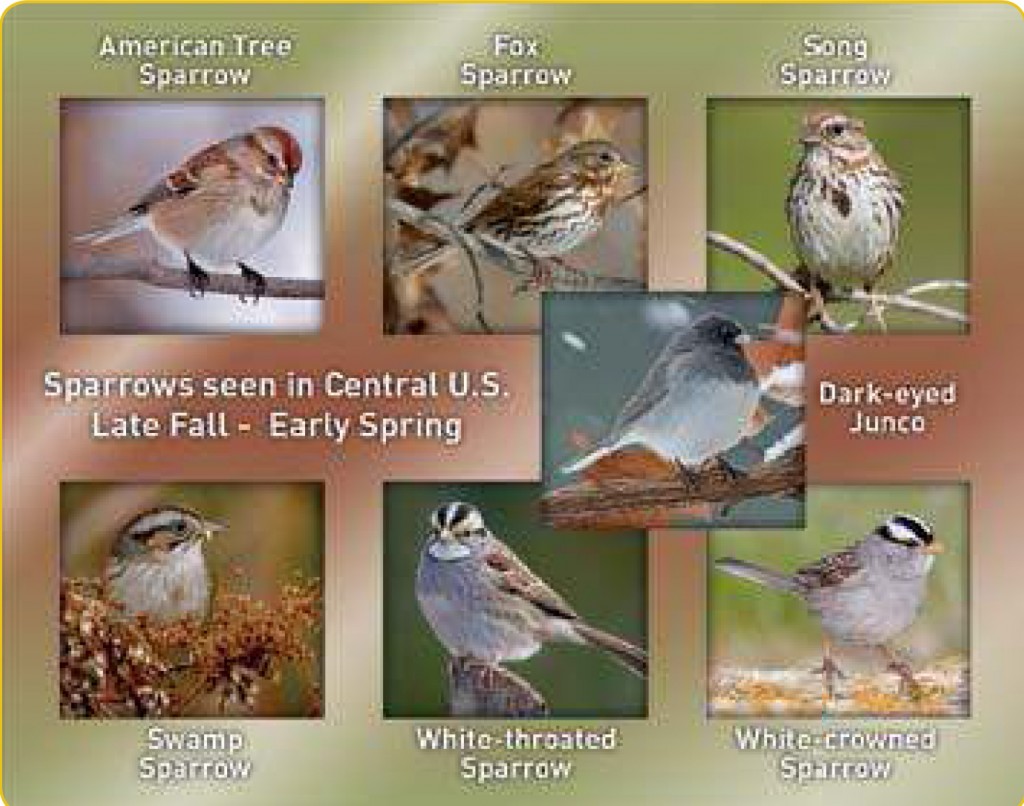In fall you’ll start to see more small brown visitors in your yard and pastures. I thought it would be a good time to discuss Native American Sparrows.
The sparrow family is a large group of relatively small birds that includes: towhees, juncos, and longspurs. All of them have short, cone-shaped beaks specialized for cracking open seeds. They are often seen scratching at the ground in search of seeds. During summer they switch to more of an insect diet to provide a higher protein food for their nestlings. They tend to be secretive and prefer hanging out on or near the ground. While some are solitary, most are seen in flocks. Sparrows are one of the more challenging groups to identify to the species level because so many look like “little brown birds.” On close inspection many have beautiful colors and patterns and when vocalizing, their distinctive songs clinch identification. To narrow down the range of possibilities, look for the following features: head pattern, breast streaked or un streaked, overall body shape, and the habitat where the bird is seen.

Ground tray feeders are best for sparrows, like the Songbird Essentials wooden trays and Songbird Essentials recycled plastic trays. Seed blends with some millet appeal to these ground feeders, but they also really like sunflower.
Twenty-six sparrow species occur in the Central U.S. In the appropriate season, ten species are common, nine are uncommon and seven are rare. The following birds are likely to be seen in Central U.S. in late fall through early spring. These same sparrows are seen in different areas of the U.S. at different times.
American Tree Sparrow
Unstreaked breast with distinctive black central spot, gray head with rusty crown and ear stripe, white wing bars, and unique two-toned beak (black above, yellow below). Found in fields, weedy woodland edges, marsh edges, gardens, and roadside thickets. First arrive in late October, uncommon to mid-November, then common through winter
Fox Sparrow
Striking rusty-red body and tail, heavily streaked breast, gray rump. Found in woodland thickets, weedy pastures, and brushy roadsides. First arrive early October, common late October through mid-November, uncommon through winter.
White-crowned Sparrow
Grayish unstreaked breast,, pale beak, adult has striking black and white stripes on head (first winter has light and dark brown head stripes). Found in brushy and weedy areas, open woodland, roadsides, and gardens. First arrive early October then common to uncommon through winter.
Dark-eyed Junco
Slate-colored race most common in Missouri. Slate gray body and hood, pale beak, white belly, and white outer tail feathers that show best in flight. Found in undergrowth of open woodlands, roadsides, and shrubs. Often visit feeder areas. First arrive late September, common late October through winter. many of us call this bird the “Snow Bird”.
